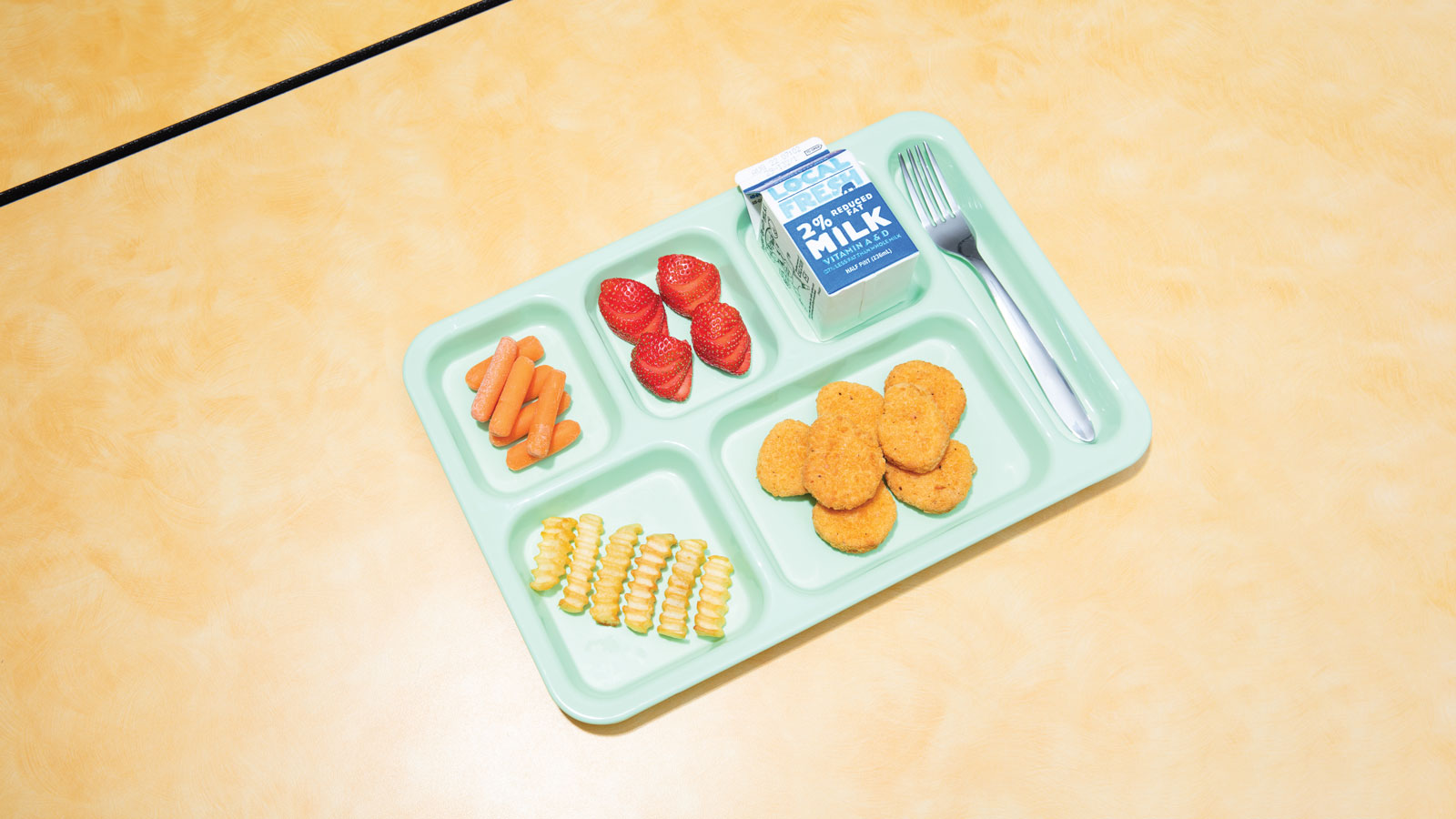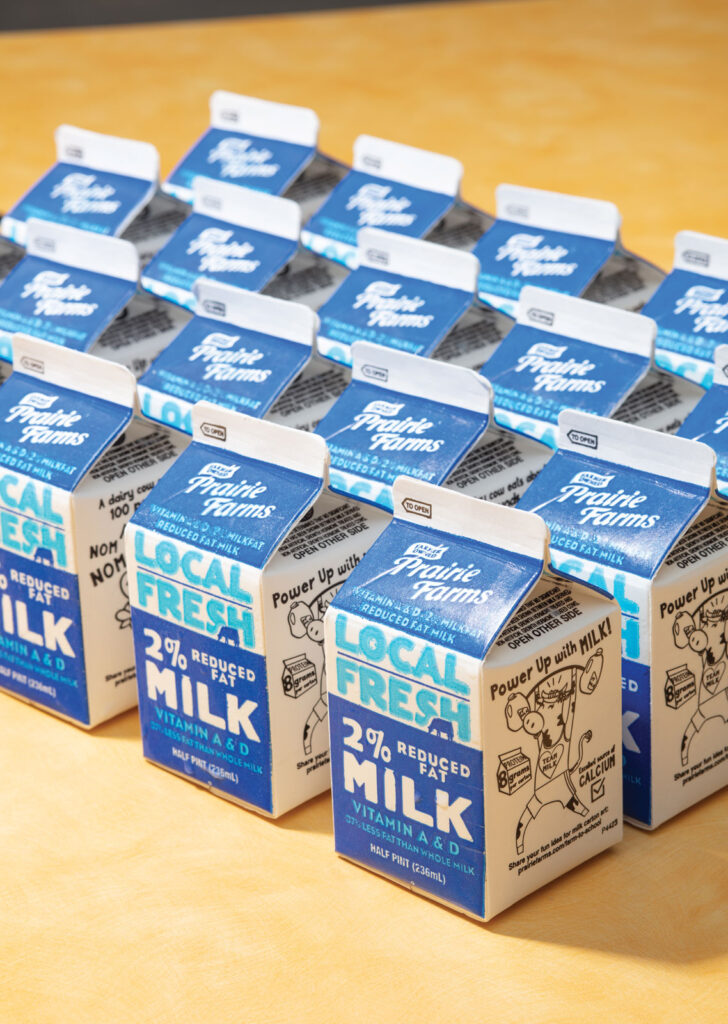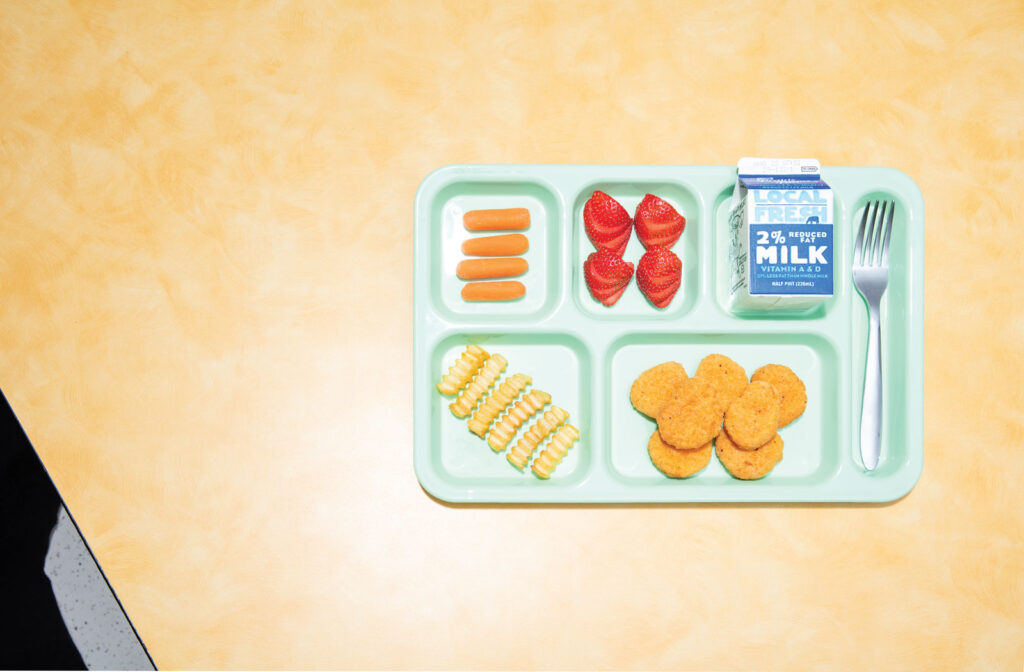
CPS provides students delicious and nutritious dining options.
During the worst years of the Great Depression, food was in short supply and work even more so. As a part of his New Deal, President Franklin D. Roosevelt procured surplus food from farmers and hired thousands of out-of-work women to cook and serve the food to hungry public school students. The program was so successful that by 1941 every state had a lunch program in place.
Today, school lunch looks a bit different and is often an essential element in the daily lives of many young people. According to the U.S. Department of Agriculture (USDA), “School meals are a powerful tool for fighting food insecurity while protecting the future of our nation’s children by getting them the nutrition they need.”
“For some children, school meals are the healthiest they receive each day,” says Laina Fullum, who for the last 15 years has served as the Director of Nutrition Service for Columbia Public Schools.

The Standards
The Healthy, Hunger-Free Kids Act, supported by First Lady Michelle Obama in 2012, changed nutrition standards for the National School Lunch Program by requiring schools to serve more fruits, vegetables, whole grains, and fat-free and/or low-fat milk more frequently, and scale back the serving of less starchy vegetables or foods high in sodium and trans-fat.
School nutrition standards for the National School Lunch Program are set by the USDA. Menu items are categorized into five food components: fruits, vegetables, grains, protein, and milk. Each day, students are offered a variety of items from each food component. The selections focus on meeting the set standards for sodium, calories, saturated fat, and trans-fat.
The Program requires schools to serve one dark green vegetable; legumes; and red, yellow, or orange vegetables at least once a week. Schools also have to monitor sodium, saturated fat, and calorie requirements set for breakfast and lunch.

Procurement
Columbia Public Schools Nutrition Services has a $9 million budget to feed approximately 20,000 students in 36 schools including 23 elementary schools, 7 middle schools, 4 high schools, and 2 alternative schools. Around 40% of the budget is used for the food itself, with another 40% going toward labor cost and the remaining 20% to equipment service costs.
Laina says a higher number of students ate school-offered meals during the last school year because they were free through June 30, 2022 due to the USDA’s COVID-19 relief efforts. “We were serving a lot more breakfasts and lunches as nearly 40% of the school population was eating reduced or free meals.”
The federal government provides approximately $650,000 in commodities, which are U.S. foods purchased by the USDA and provided to schools at minimal cost. These funds allow the district to purchase food at reduced rates based on product and season.
“We get pricing for and then purchase on the open-market things our students will eat and like and fit into the budget. Whenever there is an item, like a hamburger, it has a child nutrition label that we use to calculate our nutritional limits for the week,” says Laina.

Serving the Students
Laina says they have processes in place to manage students with dietary restrictions and allergies. “The student must have a physician’s order stating what foods are excluded and what can be substituted – it must be specific so we are not unduly restricting a child or giving them what they can’t have.”
The CPS website offers lists of nutrition labels for all foods served, as well as an extensive food allergy list categorized by allergy and the foods offered that fall in that category.
“The number of students with allergies is growing,” says Laina. “We keep a record of each student’s allergies in our system and copious lists of ingredients. When a student checks out with their lunch, the computer alerts the cashier who then lets the student know if they have something on their tray they cannot have.”
A team of field supervisors plan the menus on a three-week rotating cycle for lunch and a weekly rotation for the breakfast menu. “It keeps the chaos down, essentially,” laughs Laina. “Then, we can substitute in new things that we think the students will like.”
“We serve chicken tenders every single week on Tuesday – it is our most popular lunch item,” says Laina. Approximately calculated, if 7,500 students eat three chicken tenders once per week for 36 weeks that is 810,000 chicken tenders per school year.
Pizza comes in second on the list of student favorites. “It’s a home-bake pizza that comes in a little personal box and the students really love it,” says Laina. For breakfast, students prefer muffins and cereal. Laina says, “We try to serve eggs and they are not having it.”
The least popular items, according to Laina, is “anything green.” As far as the entrees, she says pulled pork is surprisingly low on the list. “Only a handful of kids like BBQ pulled pork. It is so good!”

The Team
Nutrition services currently employees approximately 145 people across 35 school. Positions include lunch personnel such as cooks, cashiers, and managers; warehouse personnel who deliver food across the district; couriers to pick up and deposit monies collected and maintenance staff to service equipment.
Laina says that the number is usually closer to 165 total, but since the pandemic they have been very short-handed and struggle to fill the vacancies. COVID-19 also caused product and shipment shortages which her team worked hard to manage.
“We have a lunch person who has been here for 35 years and one who recently retired after 27 years,” says Laina. “Our department is great, and our employees are amazing. During COVID, they rose to the occasion and took care of kids when families were struggling. They are hardworking caring individuals.”
A recent honoree of the Columbia Fund for Academic Excellence, Laina was selected from nominations submitted by parents and peers for their outstanding teaching, leadership, and support for students.







